NCOAE Blog
Safety in the Backcountry: Deciding When to Bail on a Trip or Adventure
Risk Management“What matters most is how well you walk through the fire.” ~ Charles Bukowski
When it comes to just about every worthwhile pursuit, the more you put into it, the more you get out. In the context of human-powered outdoor adventures, especially those that test your metal, that means pushing the limits and, for those of us who are thrill-seekers, risking life and limb.
Spending time in the backcountry is often more than simply experiencing the great outdoors; it often entails exposing ourselves to, and overcoming, adversity. Through the process, we hone our outdoor skills and build strength, coordination, and character.
Part of the attraction and much of the fun we experience when we engage in extreme outdoor activities such as mountaineering, whitewater rafting/kayaking, rock climbing, skiing, snowboarding, and so on, is the thrill. We choose to expose ourselves to an increased risk of injury or death, because that’s part of what makes extreme sports so much fun.
The secret to success is managing risk and adversity so an outing becomes a thrilling challenge while still preserving life and limb. While we crave an epic adventure that we can live to remember and talk about, achieving the right balance often involves deciding when to bail; when the balance between risk and reward is weighted far too heavily on the side of risk.
Here at The National Center for Outdoor & Adventure Education (NCOAE), we recommend using the following Safety-Fun-Learning Triangle as a guide to achieving the right balance:
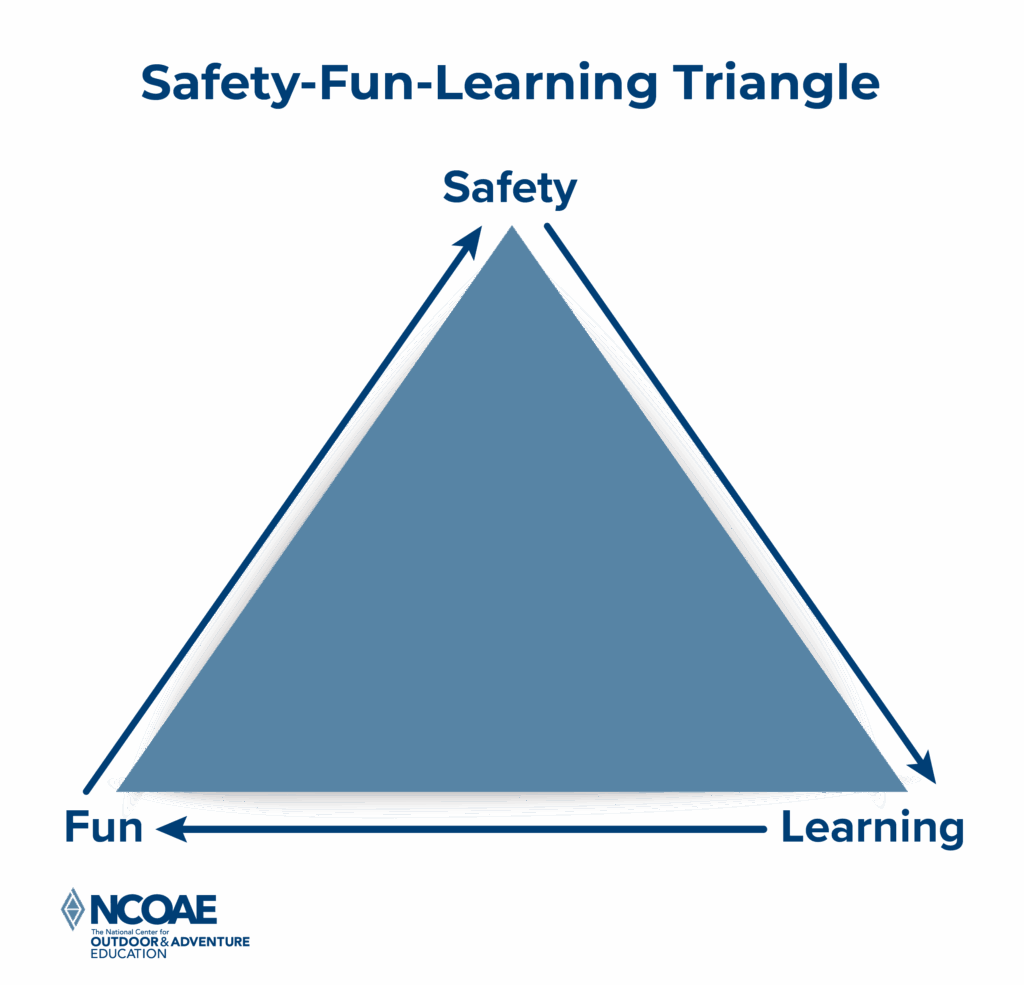
Pre-Trip Bailing
It’s late on a Friday night and the floor is littered with maps, satellite images, weather reports and info I received from reputable sources.
Teeming with excitement, my brain narrows in on the largest, wildest expedition I can put together with the info in front of me. As the early morning hours of the next day approach, I have pared down my list to one or two realistic options (realistic for me).
Regardless of whether I am consciously aware of it, this trip planning I routinely engage in almost always involves pre-trip bailing. I start with “visions of grandeur” (more…)
Improving Safety by Evaluating Near Misses
Risk ManagementThroughout our lives, we develop knowledge and wisdom, in part, by learning from our mistakes and those of others. In the context of outdoor education and adventure programming, we learn from both catastrophic events and near misses — close calls. These are events in which nearly every factor necessary to cause serious injury or death is present but catastrophe is averted due to the presence or absence of one or more conditions.
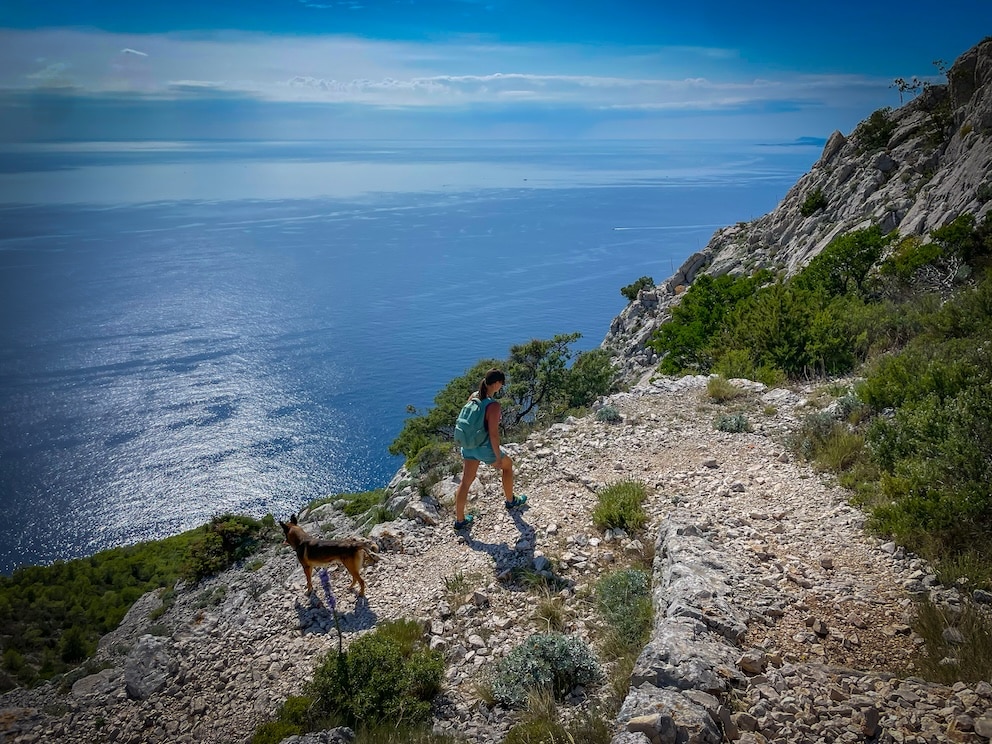
For example, imagine starting a rock climbing route and then realizing, when you’re 20 feet up, that you failed to do a specific knot check. You look down and can’t see the knot because your puffy jacket or a feature on the rock is obscuring your view. You look up and see that you have to climb about 60 feet more feet to reach an area of safety, and you’re unable to let go of the rock to get a better view of the knot, so you decide to descend. Upon reaching the ground, you discover that your knot was only half-tied.
Eventually, you’ll ponder:
- Would you have made it to the top of the climb without falling?
- Would the half-tied knot have held?
- Would a possible fall have resulted in injury?
The possible outcomes are numerous and uncertain, but the near miss is obvious, as is the lesson to be learned — don’t forget to check your knots before starting your ascent.
As Close as the Width of a Slice of Swiss Cheese
You can think of a near miss as being as close to disaster as the width of a slice of Swiss cheese. Why Swiss cheese? Because it has (more…)
Protecting Your Food from Bears and Other Wildlife in the Backcountry
WildlifeOne of the best things about camping is eating, and you’re likely not the only one in the backcountry who appreciates fine camp cuisine. Any bear, racoon, coyote, skunk, possum, or other opportunistic scavenger close enough to pick up the scent might stop by for dinner or a late night snack.
And these moochers aren’t picky. They’ll settle for food, trash, even toiletries like toothpaste and soap. That’s why it’s so important to take precautions to protect your foodstuff — and yourself — from bears and other wildlife that might come calling.
Are bears a major safety concern in the backcountry? Only if you encounter them, and that depends on where you’re spending your time. As explained in our previous post, “Gauging Your Safety in the Wilderness: What’s the Most Dangerous Animal?” you’re most likely to run into bears in remote forested or alpine areas. But you should always be careful whenever you’re in an area bears are known to roam.
Explore Your Food Storage Options
Your type of activity and style of travel will determine the food storage system you choose. Here are several simple food storage options to consider:
- If you’re car-camping, simply return your food and cookware to your vehicle after a meal.
- If you’re at a campsite that provides food storage boxes, you can use one of those.
- If you’re on a paddling trip without any risk of encountering a bear, simply secure your food in a cooler with a good lid.
However, if you’re hiking in the backcountry, you’ll need to take some additional precautions. That means using specific food storage methods such as bear hangs or bear cans, and being intentional about how you arrange your campsite.
Using a Bear Hang
Bear hangs dangle your food bag out of reach of animals. They’re lightweight and require minimal equipment:
- Bear bag or stuff sacks to contain your food and scented items, such as toiletries
- 100 feet of rope or parachute cord
- One or two carabiners
- A weighted object, such as a stuff bag with a rock in it (a heavy carabiner can do the trick)
You can choose from several different bear hang techniques. Here’s the basic One-Tree Method:
- Select a tree with a sturdy branch at least 15 feet off the ground and extending at least five feet out from the trunk.
- Tie one end of your rope to a weighted object, such as a carabiner or a stuff bag with a rock in it, and toss it over the branch.
- Clip the carabiner onto your food bags and pull on the opposite end of the rope until the bags are at least 12 feet off the ground and five feet from the trunk of the tree.
- Tie the end of the rope around the trunk of a nearby tree.
Safety precaution: Be sure nobody is standing in the direction the rope is being thrown or under the area the bag is hung.
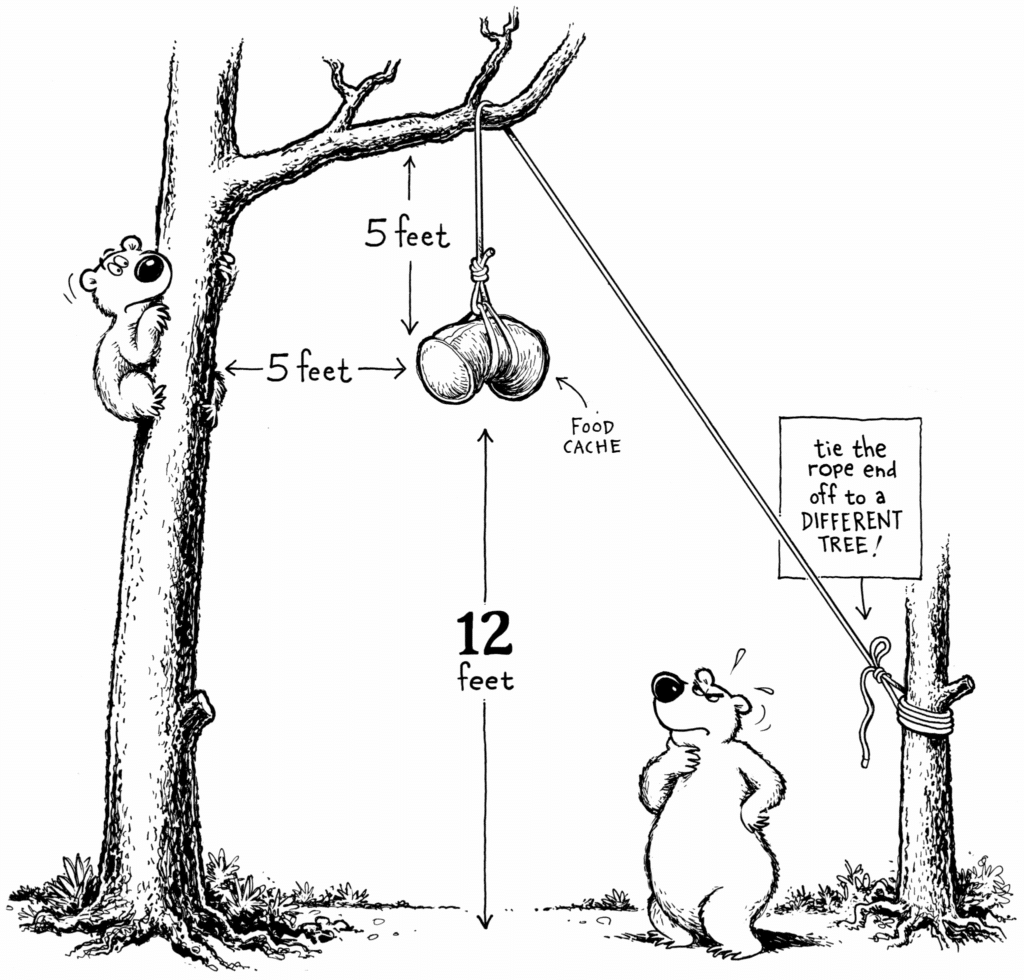
This basic method works well in most areas; however, (more…)
Gauging Your Safety in the Wilderness: What’s the Most Dangerous Animal?
WildlifeWhen wilderness medicine practitioners gather ’round a campfire, one favorite topic of discussion involves which animals are the most dangerous. Barring the obvious winner, we humans, leading candidates typically include the gorilla, shark, lion, tiger, and bear.
The unassuming mosquito and deadly microscopic organisms are often overlooked, but most likely lay absolute claim to the title.
In some parts of the world, the hippopotamus is considered the deadliest creature. Here at The National Center for Outdoor Adventure & Education (NCOAE), we’ve yet to conduct a course where hippos are involved but if we ever do, we will certainly take precautions to make these semi-aquatic animals are not on campus!
Where you are in the wilderness, of course, makes the determination of which animal presents the most peril to hikers, climbers and swimmers. For example, if you’re navigating the Boundary Waters that straddle the border between Ontario, Canada, and Minnesota here in the U.S., you’re more likely to encounter a bear than a gorilla. That’s why traveling to an unfamiliar remote location requires that you research the area to determine the biggest threats to your safety, including wild animals, and discover how best to avoid them and what to do if that doesn’t work.
The good news is that your odds of being injured or killed by wildlife are low, especially if you use common sense to avoid the biggest threats. Most wilderness injuries and fatalities come from falls, weather, and getting lost rather than from animal attacks. And don’t discount the stupidity factor, such as the man who was slapped with jaw-dropping $153,161.25 medical bill after trying to take selfie with rattlesnake.
In this post, we weigh in with our team’s take on the seven deadliest animals you might encounter when trekking through the wilderness in the U.S., along with some basic information to help you gauge your likelihood of encountering them and protect yourself and others in your group. First up, bears!
Bears
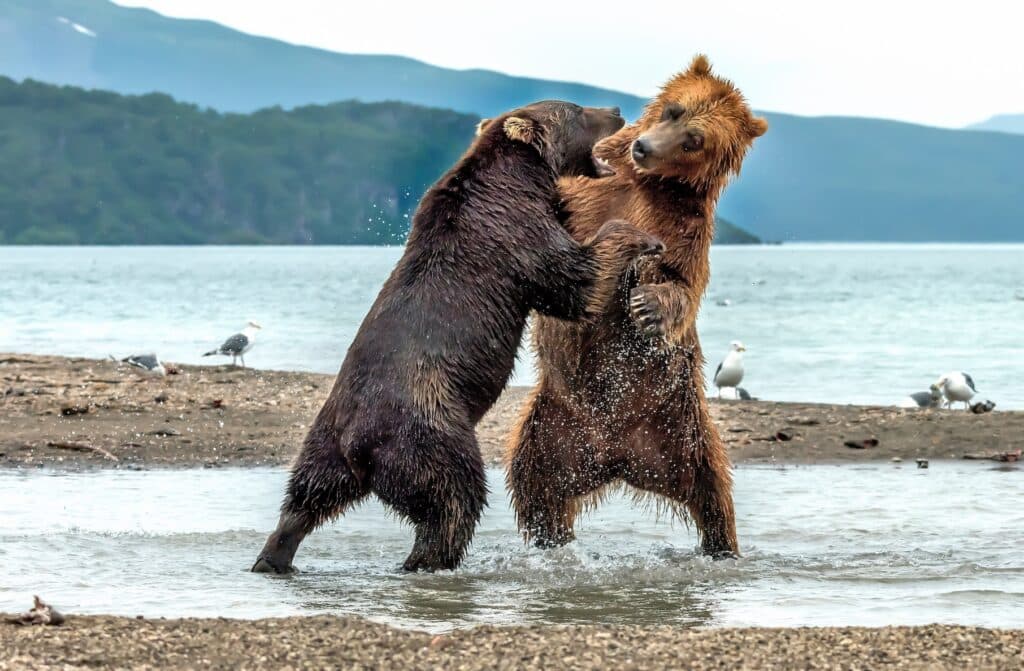
Bears are fast, powerful, and often unpredictable, especially when surprised or protecting their cubs, food, or territory. You’re most likely to encounter them in remote forested or alpine areas. Species include Grizzly bears in the northwest and Alaska, with black and brown bears being more widespread.
To protect yourself (more…)
When Help Is Hours Away: The Top 7 Essential Wilderness Medicine Skills
Wilderness MedicineWhen we venture into the backcountry, whether it’s a day hike in a nearby forest or a multi-day expedition into remote terrain, we knowingly trade comfort and convenience for solitude, challenge, and a deeper connection with nature.
This is a trade-off that comes with a conscious decision to expose ourselves to a higher-than-normal level of risk. Backcountry travel increases our chances of experiencing injury and illness while decreasing our accessibility to nearby basic or emergency medical care.
Mitigating this heightened risk requires improving our wilderness medicine knowledge and skills, something we help people do here at The National Center for Outdoor Adventure & Education (NCOAE). Our Wilderness Medicine and Emergency Medical Technician (EMT) courses cover everything from scene size-up and patient assessment to providing cardiopulmonary resuscitation (CPR), treating wounds and fractures, and successfully evacuating patients from remote wilderness areas.
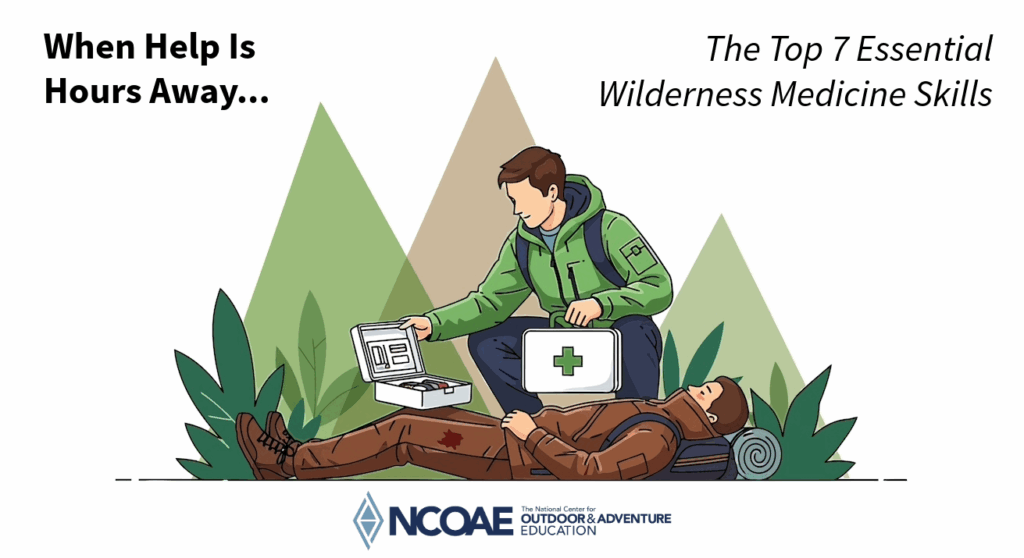
As experts in the field of wilderness medicine, we often find ourselves discussing what we believe to be the most essential wilderness medicine skills. Here, we present our top seven, in no particular order. These are skills that we think all of our students should possess before venturing into the backcountry.
1. Scene Size-Up and Patient Evaluation
Every wilderness medicine event should start with a scene size-up and patient evaluation, which consists of the following three components: (more…)
Meet the Team: J.T. Schexnayder III, NCOAE Outdoor Program Coordinator
Meet the TeamComing off a four-year stint as coordinator for a university outdoor recreation program, J.T. Schexnayder III is proving to be a masterful leader as our outdoor program coordinator. Raised in Myrtle Beach, S.C., this neighboring state native led his middle school peers on backpacking, climbing, caving and paddleboard expeditions to backcountry areas in his home state, as well as other excursions to Colorado and Wyoming.
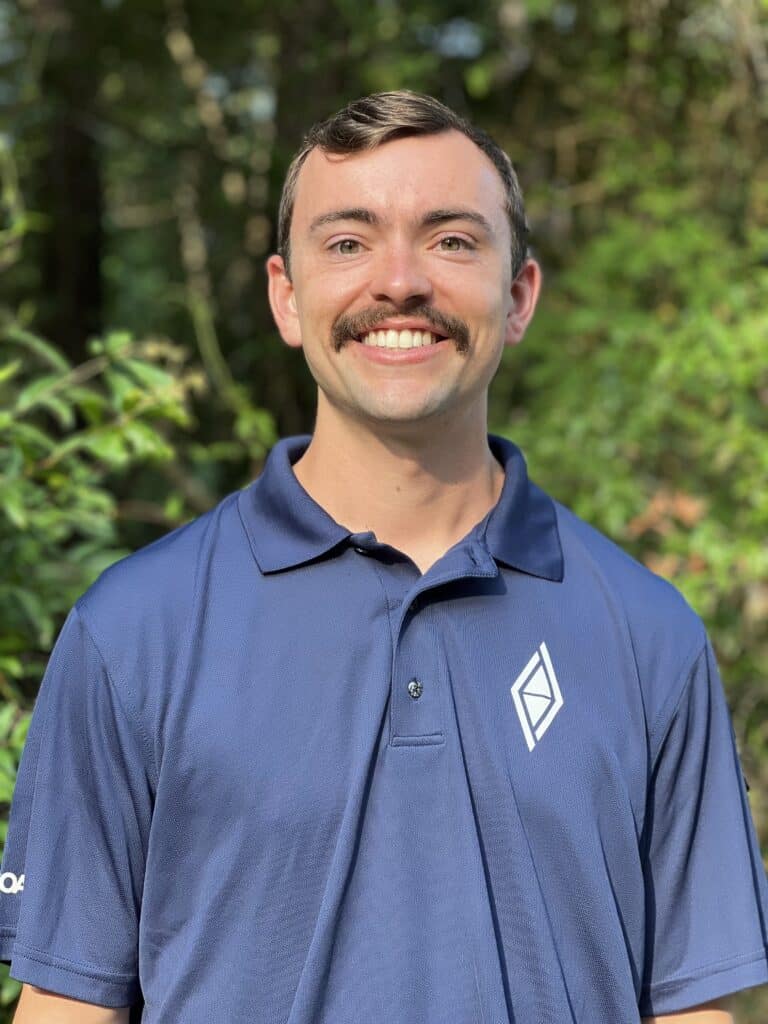
Before joining us here at The National Center for Outdoor & Adventure Education (NCOAE), J.T. organized student expeditions for the University of Georgia from 2021 to 2025. Before that, he brought the outdoors into his six- through eighth-grade classes in South Carolina and Wyoming. When school broke for summer, he would head to Highlands Presbyterian Camp and Retreat Center in Allenspark, Colorado, where as the Adventure Camp director, he supervised and guided climbing, hiking, and outdoor leadership programs as camp director.
Our new program director (he joined our team in June of 2025) received his Bachelor of Arts degree in 2018 from Washington and Lee University in Lexington, VA, with a major in American History. Following that, J.T. received a Master of Science in Forestry and Natural Resources (major in Parks, Recreation and Tourism Management) in 2025 from the University of Georgia (Athens, GA).
As an outdoor educator, J.T. is a member of the Association of Outdoor Recreation and Education (AORE), as well as the Association for Experiential Education (AEE). He holds certifications in Wilderness First Responder (WFR), CPR/AED and Mental Health First Aid (MHFA).
We asked J.T. to respond to a few questions about himself and his career, and he graciously agreed: (more…)
Choosing Safe, Comfortable Campsites
Backcountry PrepBleary eyed from a scarcity of shuteye, you shimmy out of your sleeping bag, stick your head out your tent flap, and observe your campsite. It’s not a pretty picture. In fact, it looks like you woke up in the middle of a yard sale. Or the tail end of a party turned bad.
There’s gear spread out everywhere, a tarp blown up against a tree, protein bar wrappers discarded by hungry racoons. And now it’s time to pay the piper for last night’s decision for selecting and setting up a terrible campsite.
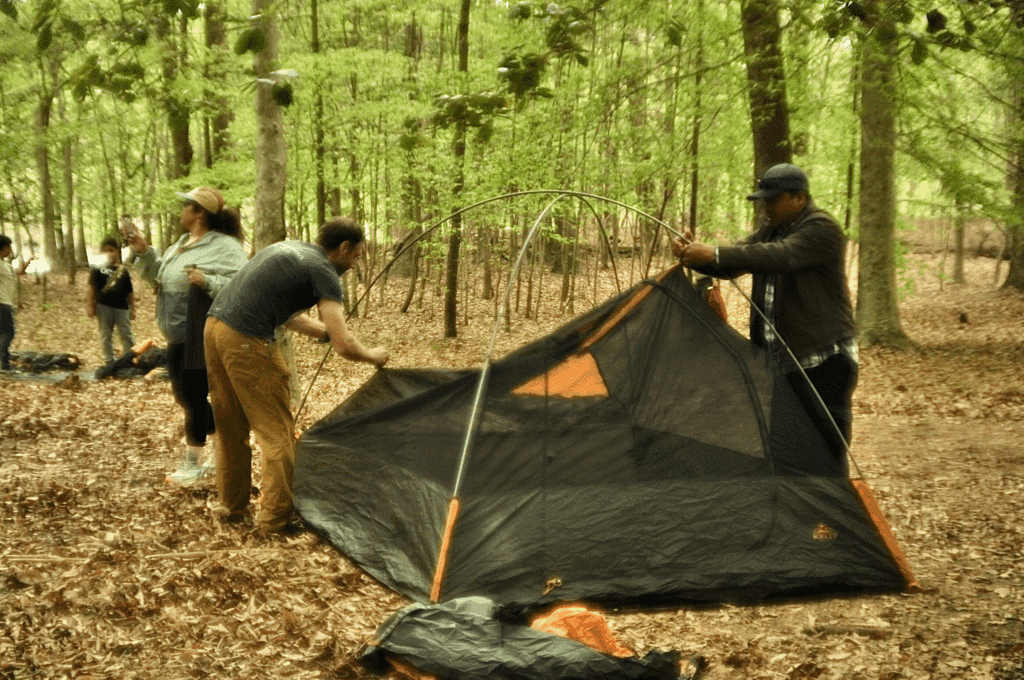
It happens. Sometimes it’s due to unpredictable weather, poor planning, inexperience, or just bad decision making. Fortunately, you can take steps to reduce its frequency. This post explains how, but first, let’s look into the importance of even having a quality campsite.
What’s the Big Deal Over Selecting and Setting Up a Quality Campsite?
Campsite selection, setup, and management aren’t always a top priority. It’s something we outdoor adventurers often do “on the fly,” when the need arises. However, the more thought and planning you put into it, the safer and more enjoyable your camping experience will be.
When contemplating the construct of a up quality campsite, you might want to consider the following factors:
- Safety: Providing protection from the weather and its effects, as well as from natural and human elements and neighboring campers ensures you’re not posing a risk to anyone’s safety.
- Comfort: You need to seek a sheltered area with a patch of soft, level ground to sleep on and an area where you can eat your meals in comfort.
- Efficiency: You should have enough room to organize your food and gear for convenience, and you want easy access to water and places to use the toilet and wash your dishes.
- Ecology: You want a campsite that’s conducive to practicing Leave No Trace (LNT) Principles. For example, try to find an established campsite instead of one that requires clearing vegetation.
Including Campsite Selection in Your Trip Planning
The process of choosing and setting up a proper campsite in a quality location should begin well before you embark on your backcountry adventure. During our pre-trip meetings with groups or during training sessions, we always talk about what makes a good campsite and important factors we need to consider before choosing sites.
When planning a trip and thinking about where you will spend the night, take the following factors into consideration: (more…)
Try Something New… and Suck at It!
Challenge by ChoiceRecently I watched “Heritage,” a short documentary about one of the early professional skateboarders, Steve Caballero. At some point in the viewing, I realized more time was being spent on Steve’s mountain biking skills and passion for motorcross than on his skateboarding career, and I had to wonder why.
If you’ve been a whitewater paddler, a climber, a surfer, or a skateboarder all your life, why would you want to try something new? You’ve proven yourself. You’re an expert. Why risk failure?
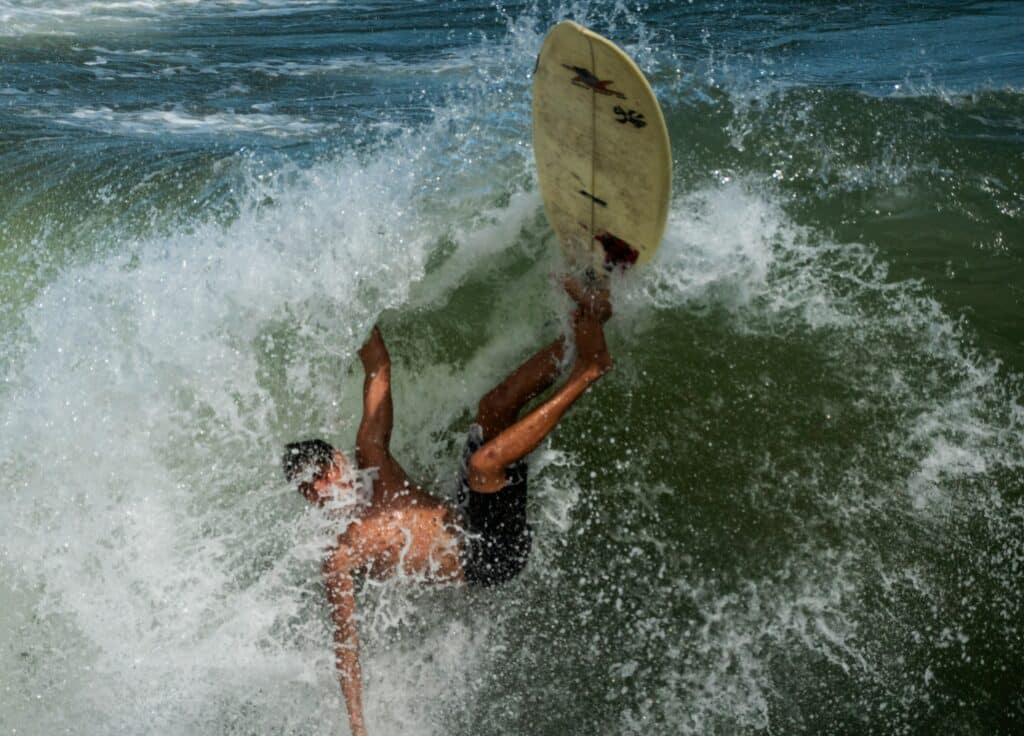
It occurred to me that maybe, just maybe, Steve wanted to experience the feeling of improve at something new rather than watch his skateboarding skills plateau or, worse, decline. After all, progression is a lot more fun than regression. Sure, you might suck at it when you’re getting started, but the sky’s the limit in terms of potential for improvement.
So, in the spirit of sucking at something new, let’s dive into novice experiences and what we gain from trying something new.
What I Chose to Suck at
I’ve been a surfer all my life. I’ve ridden massive waves all around the world and was good at it. When I moved away from the ocean, I wasn’t able to get in as much surf time as I wanted, so I started whitewater kayaking. I never got to be an amazing whitewater kayaker, but I ran some big rapids, explored remote creeks, and progressed as far as I had expected.
Knowing I wasn’t going to get much better at kayaking and knowing I was not surfing as much as I wanted to, I decided to try whitewater stand-up paddleboarding (SUP). At the time, I didn’t know anyone doing (more…)
Basic Versus Advanced Airway Management: Keeping It Simple (at First)
Emergency MedicineIn the backcountry, where hospitals are likely many miles away and help isn’t “just around the corner,” airway management becomes a high-stakes priority. After all, the statistics are against the patient. Without an open, clear airway, that patient has a zero percent chance of survival.
Whether it’s a fall, an allergic reaction, choking, or a drowning, keeping the airway open is a life and death proposition. Wilderness medicine demands quick thinking, decisive action, and a solid grasp of airway basics, because you’re the first, and perhaps only, responder.
This post brings you up to speed on airway management basics with a focus of first employing the simplest and least invasive methods for opening the airway.
What Is the Airway?
The airway is a tunnel connecting the mouth and nose to the lungs. It ends at the alveoli, which are the tiny air sacs in the lungs that facilitate the exchange of gases, primarily oxygen and carbon dioxide. As long as this tunnel remains open, a person can breathe. If the tunnel collapses or is blocked at any point, breathing ceases or is restricted to some degree.
Healthy humans maintain an open airway by holding their head upright, swallowing their secretions, controlling their tongue, coughing, spitting, and otherwise emptying the tunnel of everything but air. Whenever the airway collapses due to illness or injury or is blocked by solids or liquids “going down the wrong pipe” and getting stuck there, medical intervention is required. That’s where you, the emergency medical technician (EMT), or someone else who’s received the relevant training, must step in to clear the airway.
The interventions used by the EMT can be divided into Basic (simpler and less invasive) and Advanced (more complex and invasive).
Basic Methods for Clearing the Airway
When someone can’t breathe or is struggling to do so, you should use the simplest, least intrusive method necessary to open the airway. Basic methods include the following: (more…)
Photog Cites Loss of Touch with Nature: ‘We’re creating an illusion for ourselves’
NCOAE RecommendsIn a recent CNN article by Rebecca Cairns and London-based photographer Zed Nelson, the reader is invited to reflect on how we interact with nature, and how much of that “nature” is staged. Nelson’s project, The Anthropocene Illusion, takes viewers on a global journey to see the ways we simulate wild places and wildlife while often turning away from the real thing.

Here at The National Center for Outdoor & Adventure Education (NCOAE), this type of exploration resonates deeply with the part of our mission that speaks to inspiring stewardship and facilitating authentic experiences in the natural world.
Nelson’s photographs, which are featured in Cairnes article, capture everything from artificial safari parks to lion farms in South Africa, revealing the uneasy truth about how human-made versions of nature have sadly become commonplace. As Cairns writes:
“We’re creating an illusion for ourselves… a stage-managed version of nature where we feel we’re connecting with the natural world, but we’re not.”
Our own observations echo this. We surround ourselves with nature-themed decor ranging from beach-printed bedcovers to desktop wallpapers, all offering a fleeting sense of connection. Yet these are safe, convenient stand-ins that avoid the friction of mud, insects, unpredictable weather, and the physical challenge of being outdoors. Over time, this can (more…)
Navigating with a Map and Compass: The Bare Basics
Backcountry PrepBatteries die. Cell phones lose connectivity. Even satellite service can be unpredictable. But a map and compass? You can always count on these two “old schools” tools to discover where you are and how to get to where you’re going.
Truth is, navigating with a tried and true map and compass is an essential outdoor skill. Real explorers don’t ask Apple Maps or Google Maps for directions!
In this post, I bring you up to speed on the basics of using a map and compass in the backcountry. Here’s what you need to know:
Start with a Detailed Topographical Map
The first step is to obtain a map. If all you’re planning to do is hike well-established paths in a park, a basic trail map is all you really need. However, when you’re traveling off-road and off-path, you should have a topographical map. A topographic map shows the physical features of the land, especially its shape and elevation, as shown below.
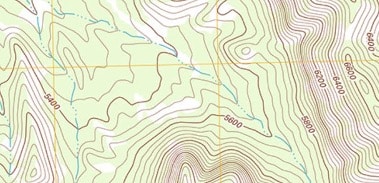
A topographical map is one of the most useful tools for wilderness navigation because it helps you visualize the terrain before you ever set foot on it.
Free Topo Maps: If you’re traveling in the United States, the U.S. Geological Survey offers free topographical maps you can download to print at US Topo. Another option is to purchase a gazetteer (a geographical “directory”) for each state in which you’re planning to travel.
Once you have your map and before you begin your backcountry or wilderness expedition, open it and familiarize yourself with its features: (more…)
Wilderness Medicine and First Aid: Knowing What to Pack
Wilderness MedicineBackcountry and wilderness expeditions and daytrips can be a blast! One minute you’re stimulated by the views and having fun, and in some instances, the next minute you’re on the ground after tripping on a rock, asking yourself, “Where did all that blood come from?”
Having the right medical supplies can turn a potential disaster into just another compelling campfire story. The question is, what medical supplies are the right ones? What items should you carry in your adventure-based first aid kit? What do you need and what can you do without?
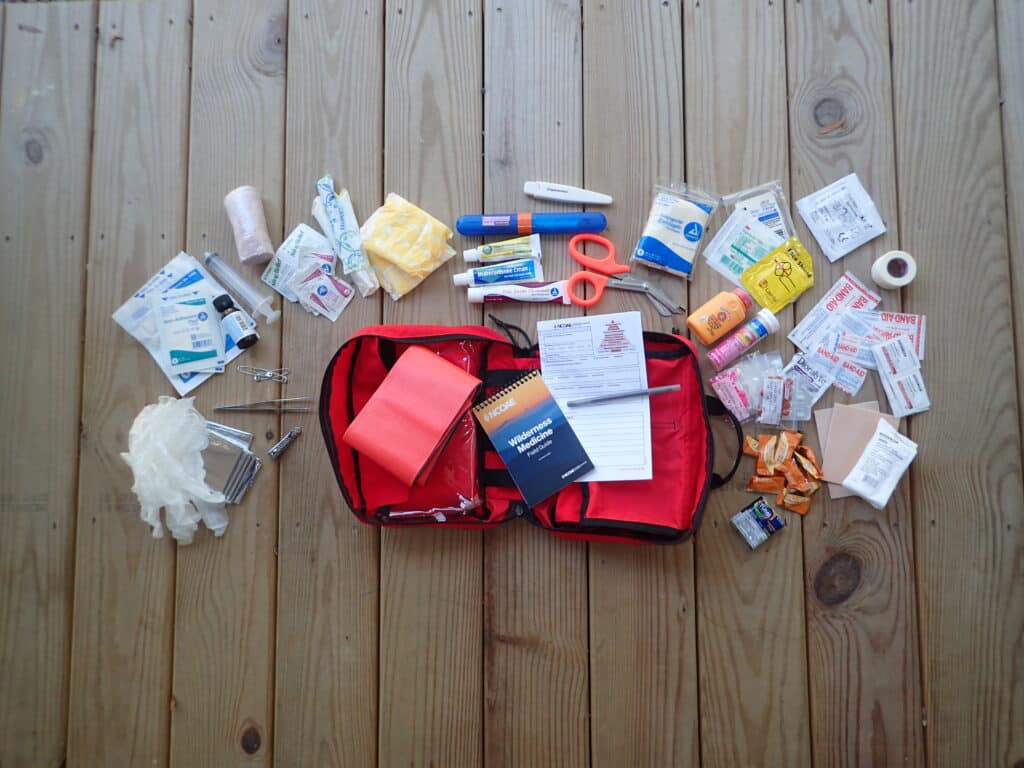
The answers to those questions are elusive, and for good reason; they vary based on several factors, including the following:
- The terrain you plan to traverse (forest, mountains, wetlands, etc.)
- The activities you’ll engage in (hiking, climbing, kayaking, etc.)
- Group size and composition (for example, if someone in your party has a history of bleeding or suffers severe allergic reactions)
- Trip length (time and distance)
In this post, I provide some general guidance on what items to include in your first aid kit, along with other points to ponder as you plan ahead for unexpected injuries and illnesses.
First Aid Kit or Boo Boo Bag?
The first decision you need to make is whether you’re packing a lifesaving focused first aid kit or a boo boo bag: (more…)
The Art of Sharing Trails with Hikers, Bikes, Horses, and Dogs
Backcountry EthicsThere it is, middle fingers up, people screaming at one another, animals running amok. It’s just another day on the trails lost to behaviors that are normally reserved for Los Angeles traffic.
It doesn’t need to be this way.
So long as everyone’s aware of the rules and then follows them, hikers, bicyclists, horses, and dogs can share the trails in peaceful harmony.
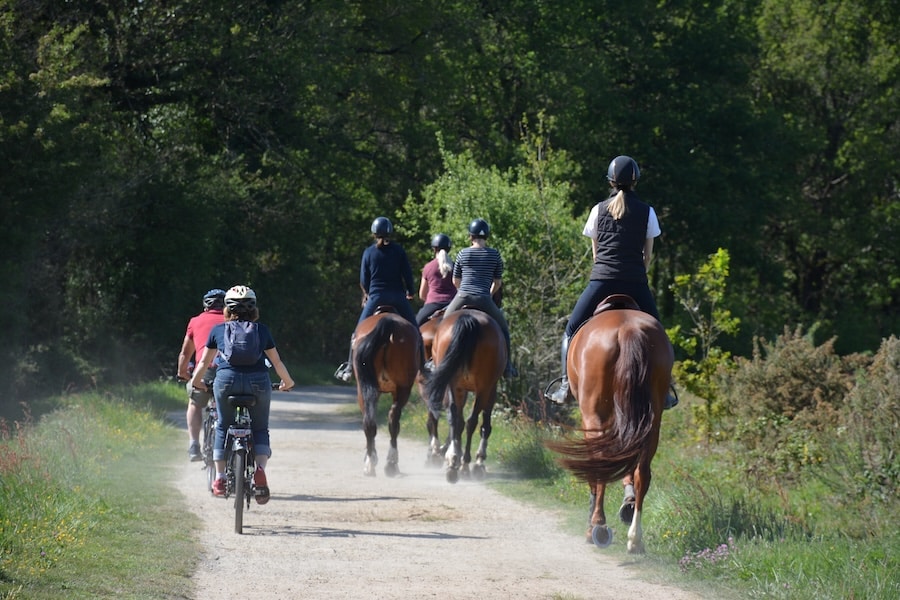
All of us should have access, as well as the right, to enjoy trails designated as multi-purpose. Open access is great. And, of course, the more access we provide to people who engage in diverse outdoor activities, the more money is available to maintain and expand trails, and the more voices we have to ensure that trails remain intact.
Yes, access for many is great for everyone until it isn’t. I have witnessed abominable behaviors — physical fights, trash talking, and worse — in my time on trails. More often than not, one or all of the guilty parties were at fault, usually because they weren’t cautious, didn’t know or practice proper trail etiquette, or lacked the skills to behave with a modicum of courtesy and civility.
In this post, I bring you up to speed on the rules and best practices that can make everyone’s time on trails more enjoyable.
Follow the Sign
Whenever you’re out on a trail, you’re wise to follow the signs, and I’m not just talking about trail markers. Here’s a sign that serves as a great visual for remembering who yields to whom on multi-use trails.
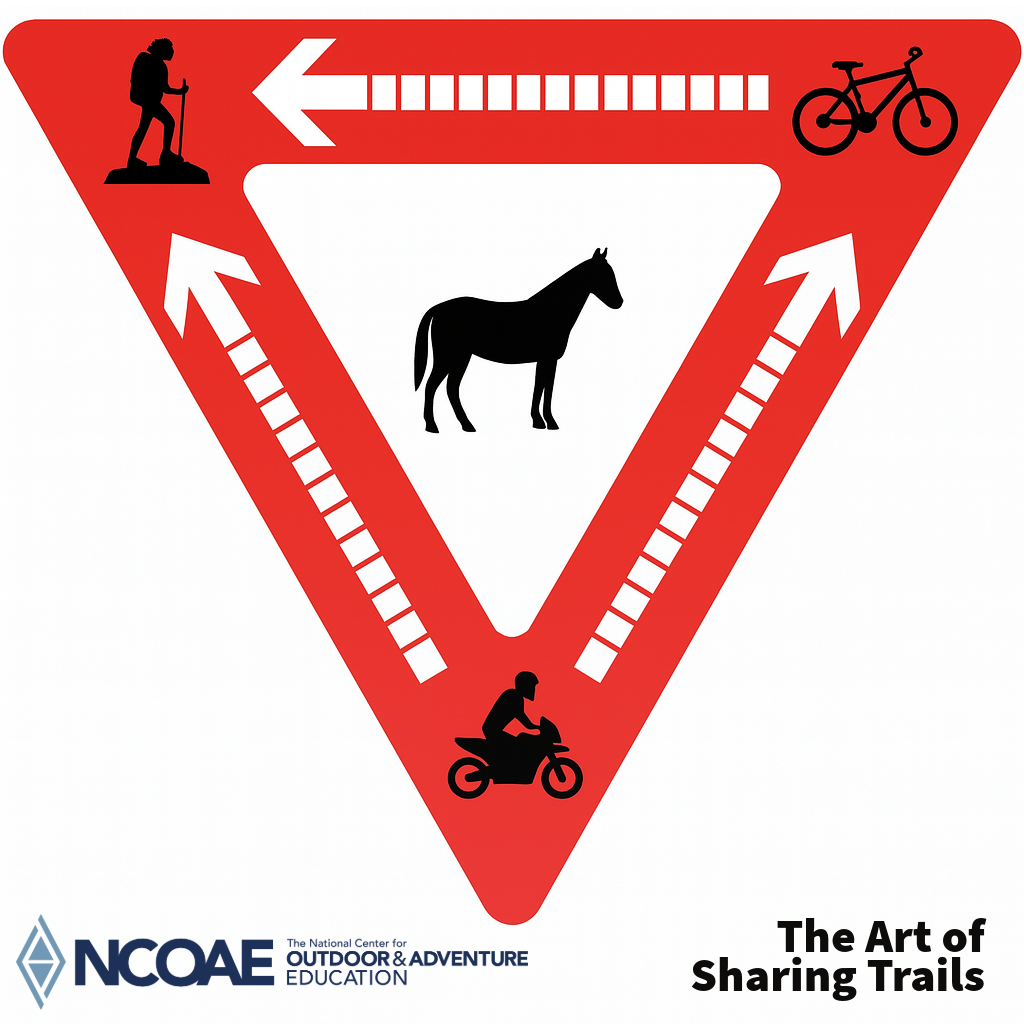
Here’s what it means:
- Bicyclists yield to hikers.
- Motor vehicles yield to hikers and bicyclists.
- Everyone yields to horses.
Easy. Right?
Among the things that make sharing trails and right of ways on trails difficult is that everyone on the trails is in motion. Hikers are moving at around three miles an hour. Cyclists commonly travel at speeds ranging from 10 to 30 miles an hour. Those on e-bikes are often hustling along in excess of 40 miles an hour. And horses typically walk, trot, or canter at speeds ranging from four to 15 miles an hour. These differences in speeds can lead to potentially dangerous encounters, which, in turn, can trigger fear or frustration. Either of those emotions can quickly turn to anger.
Many trail users think of trails as being (more…)
Words Matter: Speaking the Same Language in Wilderness Medicine
Wilderness MedicineLanguage provides a foundation for human progress. Having a common language enables us to communicate, collaborate, and coordinate our efforts in able us to achieve more together than any of us could possibly achieve on our own. It allows us to organize our thoughts and solve problems collectively.
It’s when we’re not speaking the same language, or we have a different understanding of the terminology being used, that chaos ensues. Take NASA’s Mars Climate Orbiter (aka Mars Surveyor ’98 Orbiter), for example. Launched on December 11, 1998, the spacecraft was lost because NASA used the International System of Units (metric), while the company that built the spacecraft, Lockheed Martin, used the United States customary units (imperial). That simple miscommunication caused the Mars Climate Orbiter to enter the Martian atmosphere on September 23, 1999, at the wrong angle and disintegrate.

As practitioners of wilderness medicine, outdoor educators and others can learn valuable lessons from that story. After all, successful treatment outcomes often require close communication, collaboration, and coordination among treatment providers. Having a different understanding of the same terminology can result in serious negative consequences. This is especially true in life-threatening situations where the space between life and death can be as narrow as a razor’s edge. In these situations, using a common language can save lives.
In this post, we explore wilderness medicine terminology that’s a common source of misunderstandings. By increasing your awareness of how these terms are often used and understood, you can ensure that you and other members of the treatment team are communicating clearly and precisely.
Recognizing Terms That Can Be a Source of Confusion
Communication is so important that EMT textbooks often include an entire chapter or appendix on medical terminology. These terms and their definitions ensure clarity on everything from (more…)
Experiential Learning in the Backcountry: a Balance of Fun, Learning, Self-Development
Experiential EducationWe live in a world increasingly dominated by social media, virtual reality, and artificial intelligence. So, when it comes to backcountry and wilderness expeditions, participants of all ages have an opportunity to learn and grow in fun, challenging real-world settings.
Whether navigating rugged terrain, setting up a tent, or preparing a meal without the aid of modern appliances, participants in guided outdoor adventures are required to think critically, adapt quickly, reflect deeply, and collaborate closely with others. In this post, I explore how backcountry adventures serve as powerful catalysts for personal growth, leadership development, and environmental awareness.

Here at The National Center for Outdoor Adventure and Education (NCOAE), we offer guided outdoor expeditions that focus on creating profoundly empowering experiences for everyone involved. In the backdrop of a wilderness setting, we encourage participants —students on a summer teen leadership expedition or adults on one of our 21-day adult leadership expeditions — to challenge themselves to grow and expand upon their critical thinking, teamwork, and technical outdoor skills.
Most of our first-time participants have little to no experience in the backcountry, and that’s why our objective is not to turn them into avid backpackers, rock climbers, or paddlers. While our adventures often spark a new passion for these activities, our goal is to use the backcountry as a classroom that facilitates learning and personal or professional growth.
Outdoor and adventure-based experiential education in the backcountry enables our course participants to learn, grow, and build self-confidence. And they do this by: (more…)
Search and Rescue Basics for Wilderness Medicine
Wilderness MedicineAccording to some emergency medical professionals, including one of my early mentors, every emergency medical service (EMS) call involves a search. Even in urban settings where we’re given a home address for a patient, we need to confirm the location, find it, and gain access to the patient. And even after arriving at the right address, finding and gaining access to the patient within the home or building can be a challenge.
As a current or future Wilderness Medicine Care Provider, you may be called upon to provide care in diverse environments under a variety of circumstances — and you need to be prepared to do so. One of the environments we train for here at The National Center for Outdoor & Adventure Education (NCOAE) is the backcountry, more commonly referred to as the wilderness.
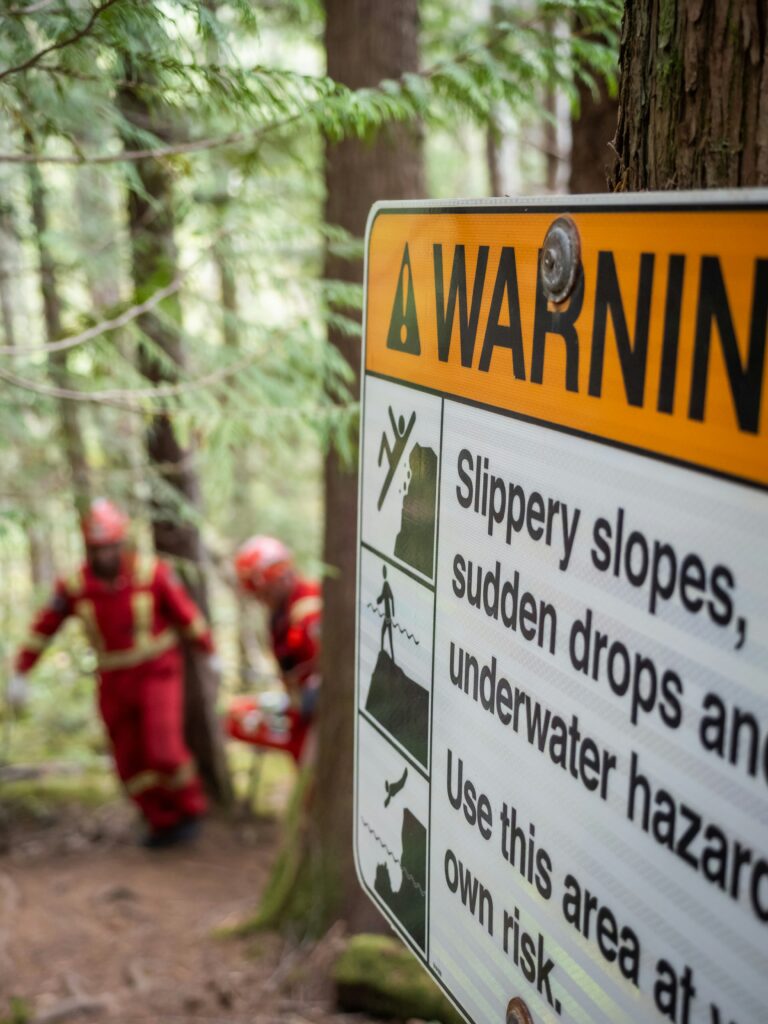
Wilderness medicine encompasses a broad range of scenarios, ranging from the simple treatment of basic cuts, scrapes, blisters, and bruises, to conducting complex search and rescue operations in remote areas, in dangerous weather conditions and across challenging terrain.
Patients are often those within an activity group or in a group nearby, but sometimes the incoming call notifies us of a problem in a remote, unclear location. In such cases, we need to find the patient before we can treat the patient, and in many cases, we need to move distressed individuals or parties to safety.
In this post, I bring you up to speed on the fundamentals of conducting search and rescue in diverse environments and unpredictable circumstances.
Defining Search and Rescue (SAR)
Wilderness medicine includes some complex and challenging diagnostic and treatment procedures. SAR adds another layer of complexity to make it even more challenging. To gain a better understanding of the challenges, consider what each of these tasks involves: (more…)
We Did It! NCOAE is Now Accredited by Cognia
AccreditationLast September, we told you we were seeking accreditation from a trio of the nation’s top accrediting bodies: the Southern Association of Colleges and Schools Council on Accreditation and School Improvement (SACS CASI), the North Central Association Commission on Accreditation and School Improvement (NCA CASI), and the Northwest Accreditation Commission (NWAC).
And today, we’re pleased to share that Cognia — the parent organization of the above-mentioned agencies — has officially granted The National Center for Outdoor & Adventure Education (NCOAE) full accreditation status. This is a huge milestone for us, and even more so for the students and families we serve.
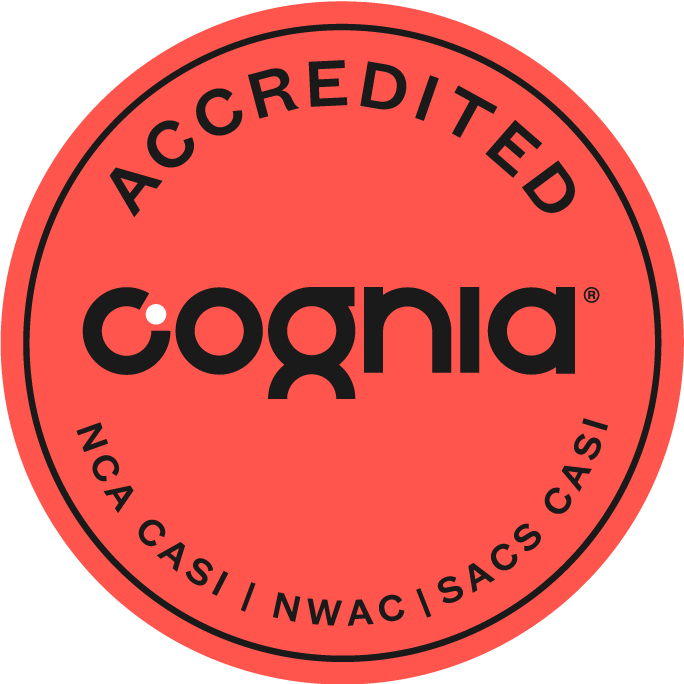
What Cognia Accreditation Means for NCOAE Students and Partners
This recognition confirms that NCOAE meets Cognia’s rigorous performance standards, which are the same standards applied to traditional schools, education service providers, and school districts across the country and around the world. More important, it means that students who complete select NCOAE programs — including our High School Summer Block-Semester — may now be eligible to earn and transfer academic credit to their high school.
We’ve always believed that wilderness and the backcountry is a powerful classroom. Now, it’s also an accredited one.
Why Cognia Accreditation Matters
Cognia is a globally respected nonprofit that accredits more than 36,000 schools and education providers in over 90 countries. Through its regional agencies, Cognia is recognized by the U.S. Department of Education. Its rigorous evaluation process ensures that institutions like ours deliver high-quality, student-centered learning.
By earning this accreditation, NCOAE: (more…)
Preview: Summer 2025 Teen Leadership Expeditions
Teen ExpeditionsChances are good that you’ve had to take at least one course in English composition that required you to write a 500-word essay entitled, “How I Spent My Summer Vacation.” Most teens talk about their vacation or their summer job, but you can talk about leadership activities for teens.
Perhaps you had the best summer ever and found yourself struggling to limit your prose to a paltry 500 words. However, most students have trouble finding enough verbosity to attain the required verbiage.
Don’t let that happen to you. You can make this summer the one you’ll never forget!
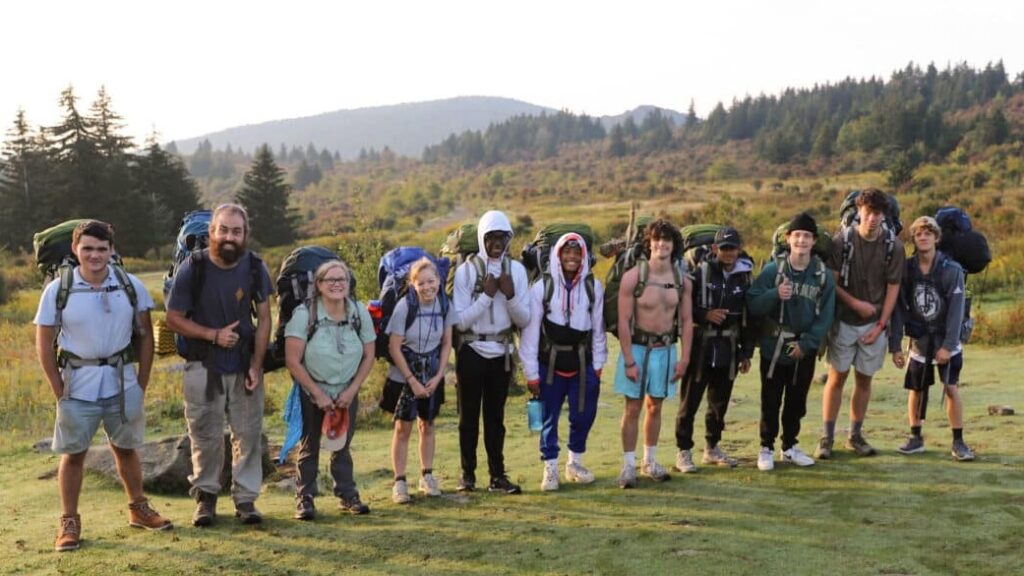
Explore the outdoors while building your technical outdoor skills on a Teen Leadership Expedition this summer with us here at The National Center for Outdoor & Adventure Education (NCOAE).
For 2025, we are offering several 14-day summer camp courses designed specifically as teen leadership activities. Based in Alaska, North Carolina, and the Pacific Northwest, these guided expeditions offer the perfect blend of outdoor adventure, hands-on experiential education, camaraderie, and fun in some of the most awesome wilderness settings in the United States!
Our 14-day teen expeditions feature a ton of adventure, with exciting outdoor activities that include backpacking, mountaineering, trekking, and rock climbing — not to mention paddling activities like canoeing, kayaking, or whitewater rafting.
Here’s what you should know about each destination and course, starting with our two-week Alaska Teen Leadership Expedition. (more…)
Oxygen at Altitude is a Major Consideration in Wilderness Medicine
Wilderness MedicineWilderness medicine covers an enormous area of study and practice. From anaphylaxis to zoonotic diseases, it covers a lot of glossary. From deep-water diving to high-altitude mountaineering, it covers a lot of territory including oxygen deprivation.
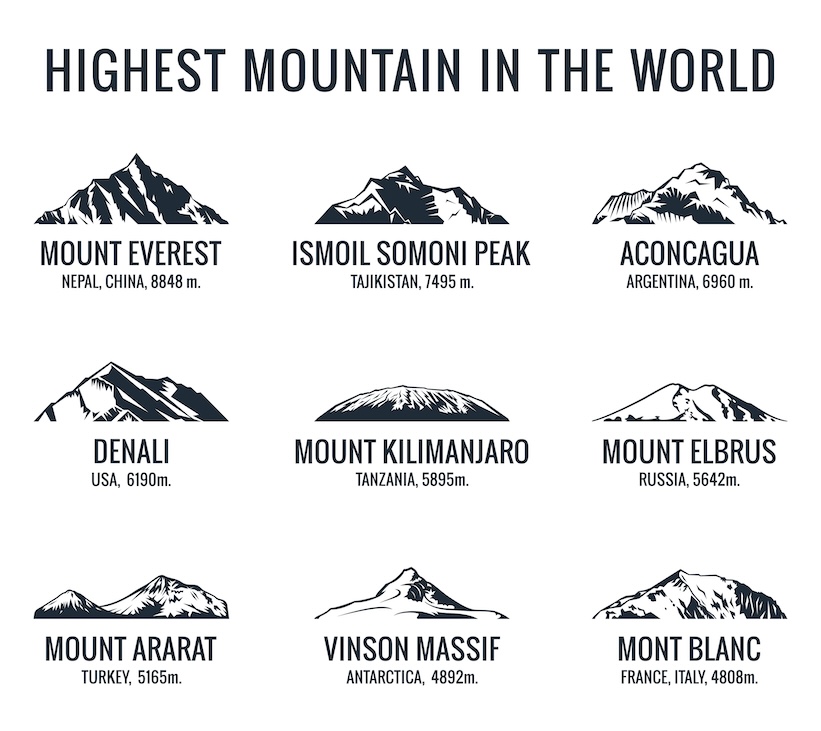
Mountain tourist vector logos set. Adventures Icon mount. Highest mountain in world. Everest and Ismoil Somoni Peak, Aconcagua, Denali, McKinley, Kilimanjaro, Elbrus, Ararat, Vinson Massif, Mont Blanc
In this post about wilderness medicine, we focus on four terms in that glossary to which every outdoor educator and backcountry/wilderness guide should be aware:
Oxygen is a gas comprised of two oxygen molecules bound together (O2), that’s essential for the survival of most earthly lifeforms. You can live without food for several weeks, without water for several days, but only a few minutes without oxygen.
Atmosphere is the gaseous mass that surrounds a celestial body like Earth. Earth’s atmosphere is composed of about 78 percent nitrogen, 21 percent oxygen, 0.93 percent argon, and 0.04 percent carbon dioxide, along with trace amounts of other gases and variable water vapor. This gaseous “envelope” is divided into layers ranging from the troposphere to the thermosphere, with the percentage of oxygen remaining the same in each of those layers. (more…)
Campfires Should Be Designed to Delight — and then Disappear
Leave No TraceLittle in the wilderness experience quite compares to sitting around a warm campfire after a day on the trail. Crackling embers, shimmering luminescence, and radiant warmth have an almost primal attraction.
When you take advantage of our teen leadership expeditions, adult leadership expeditions, or our high school summer semester, you’ll experience many campfires.
Whether you’re toasting marshmallows, sharing stories, debriefing the day’s group-based activities, or simply gazing into the glow, a campfire creates an intimate connection to nature, to others, and to oneself.

For those of us who work in outdoor education and adventure-based programming, the impact of a campfire on our students must include consideration of the environmental impact of these moon-lit activities. In this blog post, we explore why people are so drawn to campfires and then we share tips on how to enjoy them without leaving a lasting trace.
Appreciating the Appeal of Campfires
People are naturally drawn to campfires, and for good reason — actually several good reasons. Here are some of the qualities that make campfires so alluring (more…)
TALK TO US
Have any further questions about our courses, what you’ll learn, or what else to expect? Contact us, we’re here to help!